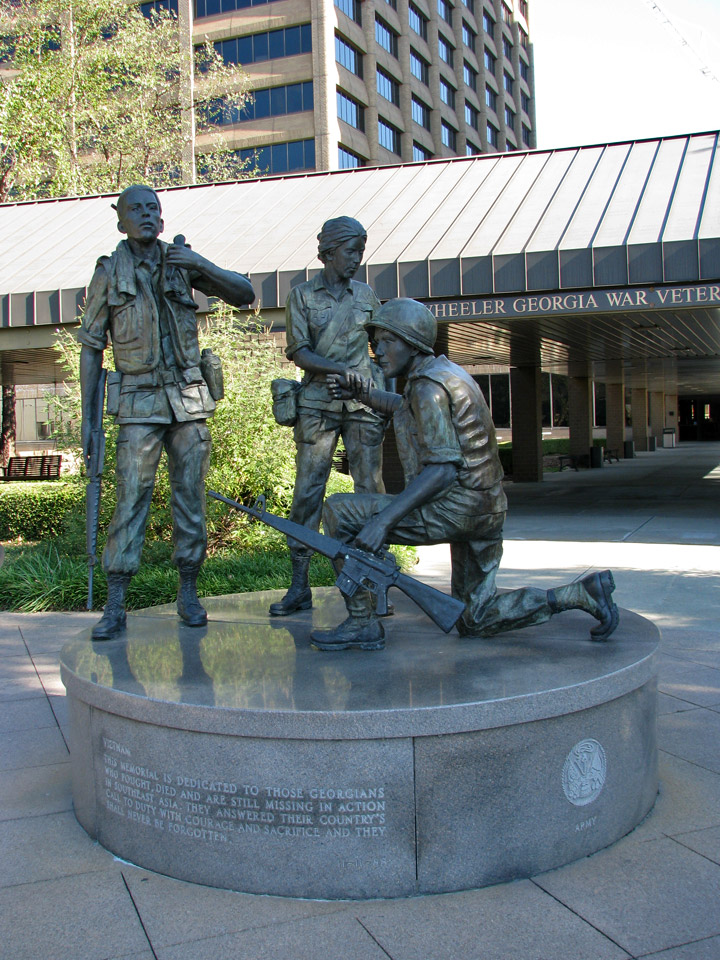

State Capitol
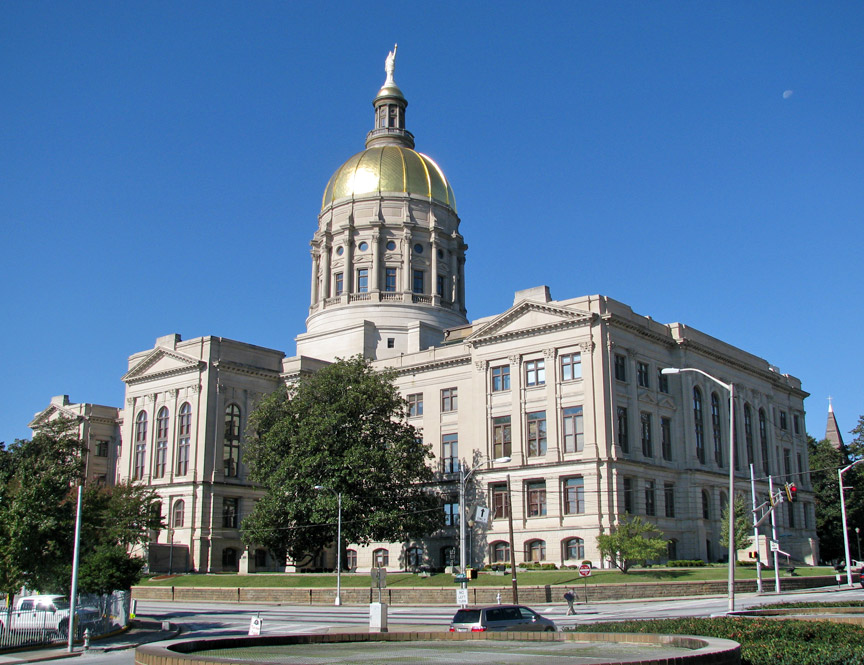
State Capitol
The Georgia State Capitol, in Atlanta, Georgia, in the United States, is an architecturally and historically significant building. It has been named a National Historic Landmark and is listed on the National Register of Historic Places. In addition, it is the working center of Georgia's government. The offices of the governor, lieutenant governor, and secretary of state are on the second floor, while the General Assembly meets on the third floor from January to April. There are also visitors' galleries and a museum on the fourth floor.

The capitol site was previously the first Atlanta City Hall. In getting the
state to change the capital city to rapidly-growing and industrialized Atlanta
from rural Milledgeville, the city donated it to the state. The first capitol in
Louisville no longer stands, while Augusta and Savannah before it never had
particular capitol buildings, perhaps causing (or caused by) the alternation of
those two cities as capital. The legislature also met at other places, including
Macon, especially during and just after the Atlanta Campaign of the American
Civil War.

Like many U.S. state capitols, the Georgia State Capitol is designed to resemble
the Renaissance architecural style of the United States Capitol, in Washington,
D.C.. Completed in 1889, the building was designed by architects Willoughby J.
Edbrooke and Franklin P. Burnham, of Chicago, Illinois. The building was
constructed by Miles and Horne, of Toledo, Ohio. Sculptor George Crouch executed
all the ornamental work on the building. The commission that oversaw the
planning and construction of the building included former Confederate general
Phillip Cook.
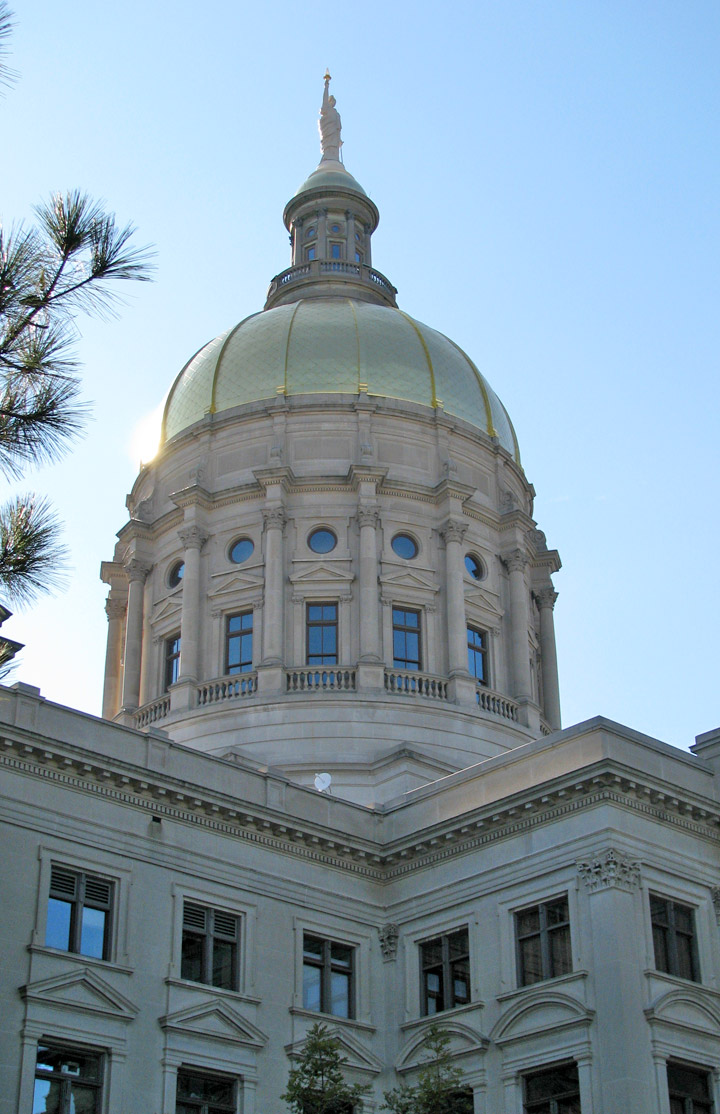
The front of the capitol faces west on Washington Street. The fašade features a
four-story portico, with stone pediment, supported by six Corinthian columns set
on large stone piers. Georgia's coat of arms, with two figures on each side, is
engraved on the pediment. The Capitol's interior reflects the Victorian style of
its day. It was among the earliest buildings to have elevators, central steam
heat, and combination gas and electric lights. Classical pilasters and oak
paneling are used throughout the building. The floors of the interior are made
of marble from Pickens County, which still produces marble products today.
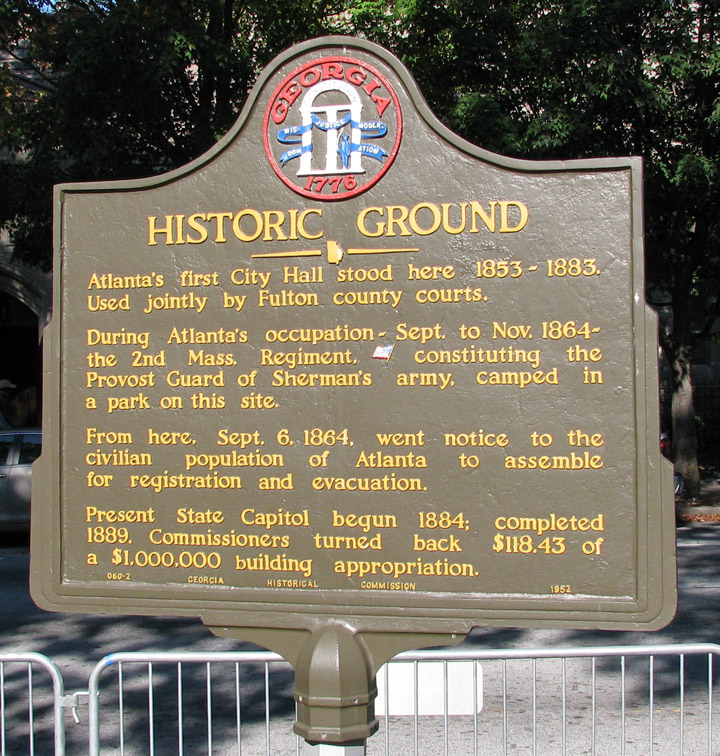
The open central rotunda is flanked by two wings, each with a grand staircase
and three-story atrium crowned by clerestory windows. The Capitol building has
undergone frequent renovations to adapt to the growth and change of government.
Originally constructed from terra cotta and covered with tin, the present dome
is gilded with native gold leaf from near Dahlonega in Lumpkin County, where the
first American gold rush occurred in the 1830s. For this reason, legislative
business is often referred to as what is happening "under the gold dome" by
media across the state. The statue Miss Freedom has adorned the dome since the
building's opening.g.
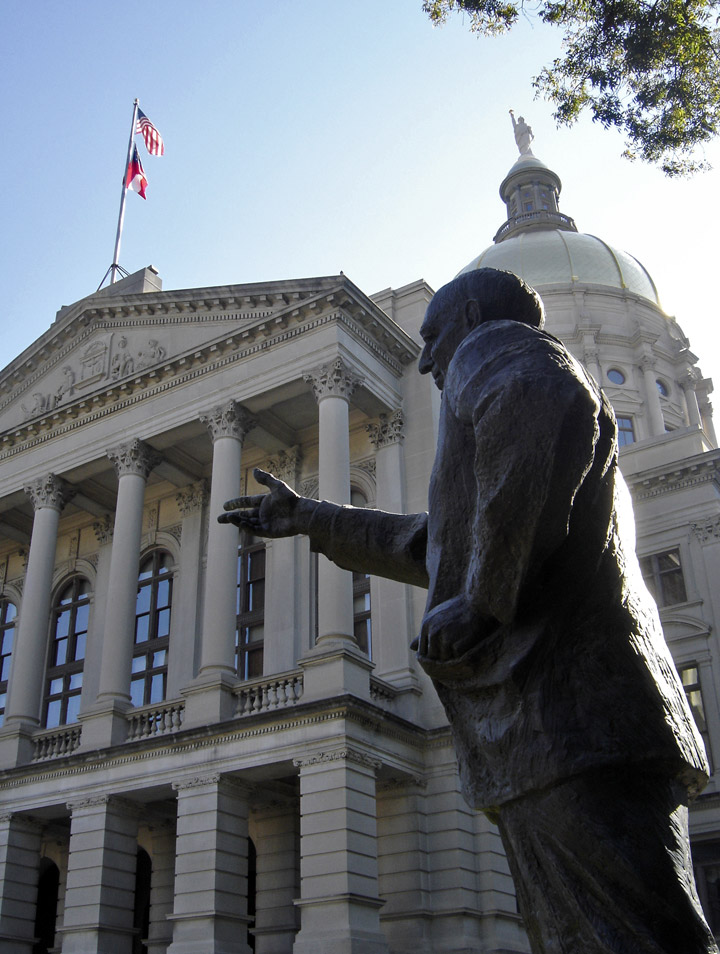
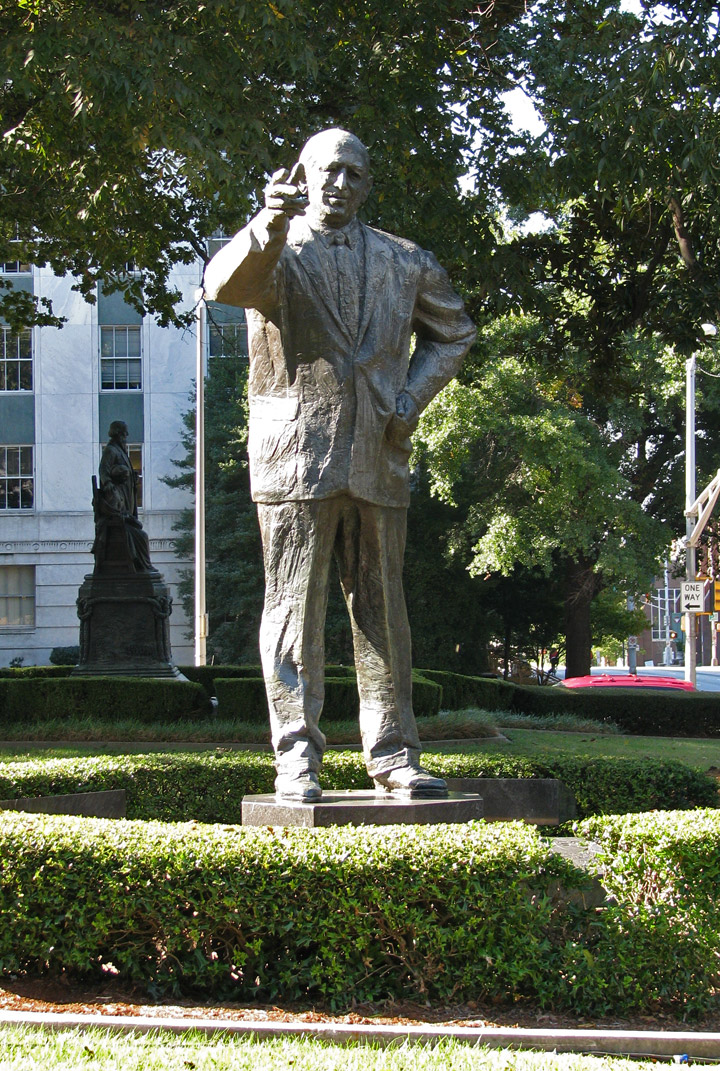
Richard B. Russellll
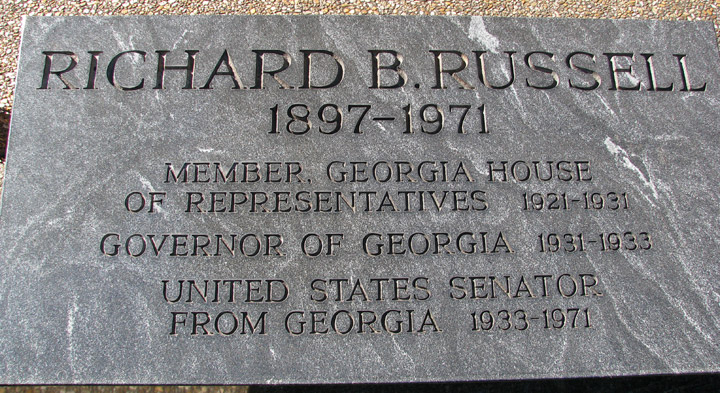
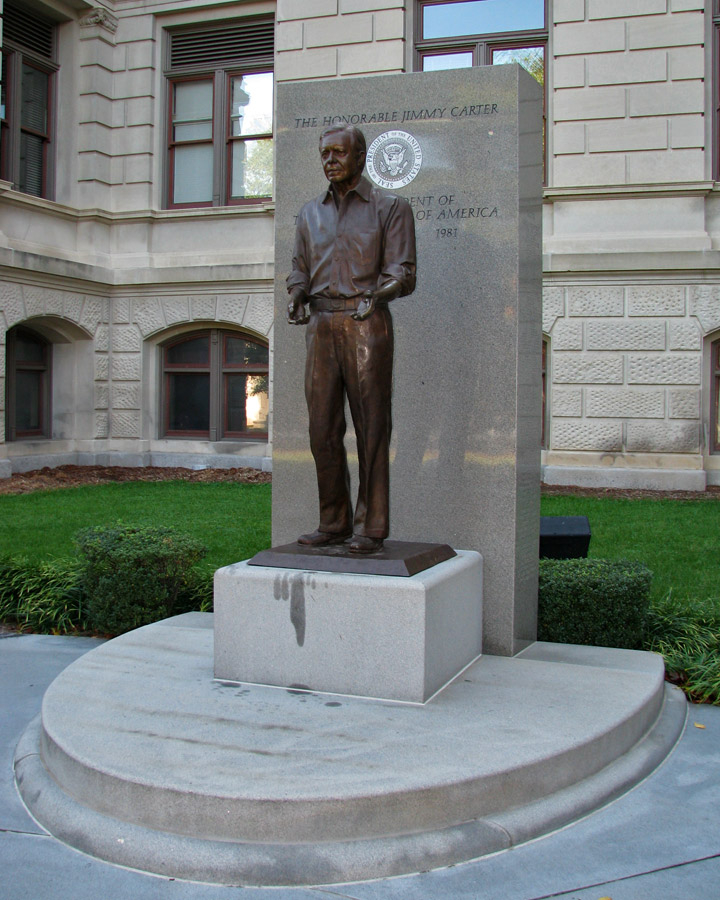
Jimmy Carter
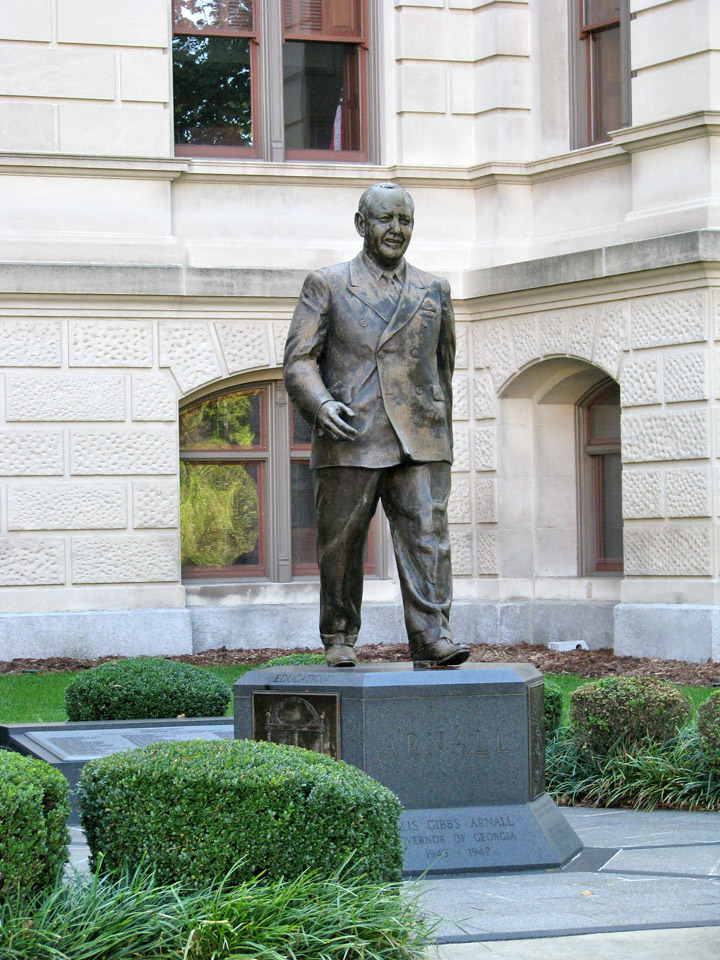
Arnall
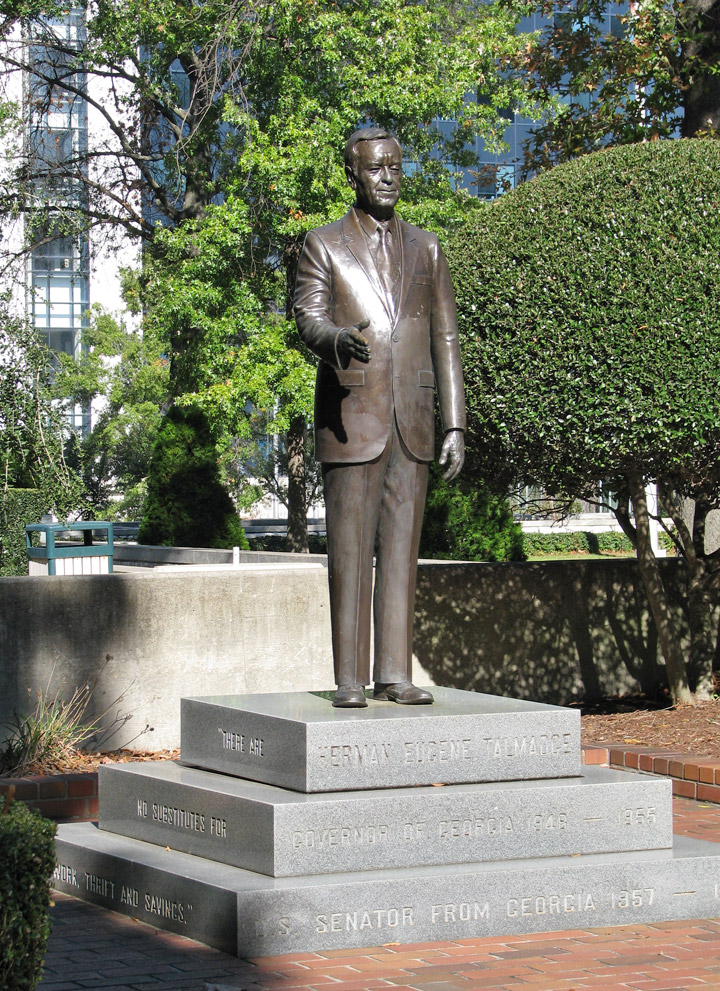
Herman Eugene Talmadge
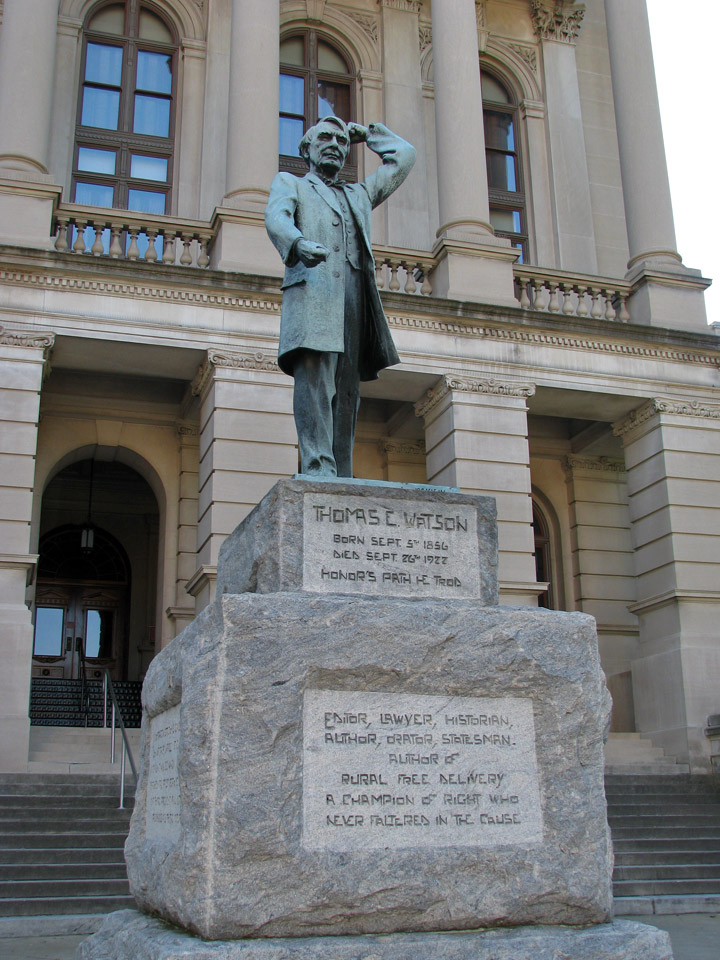
Thomas E. Watson

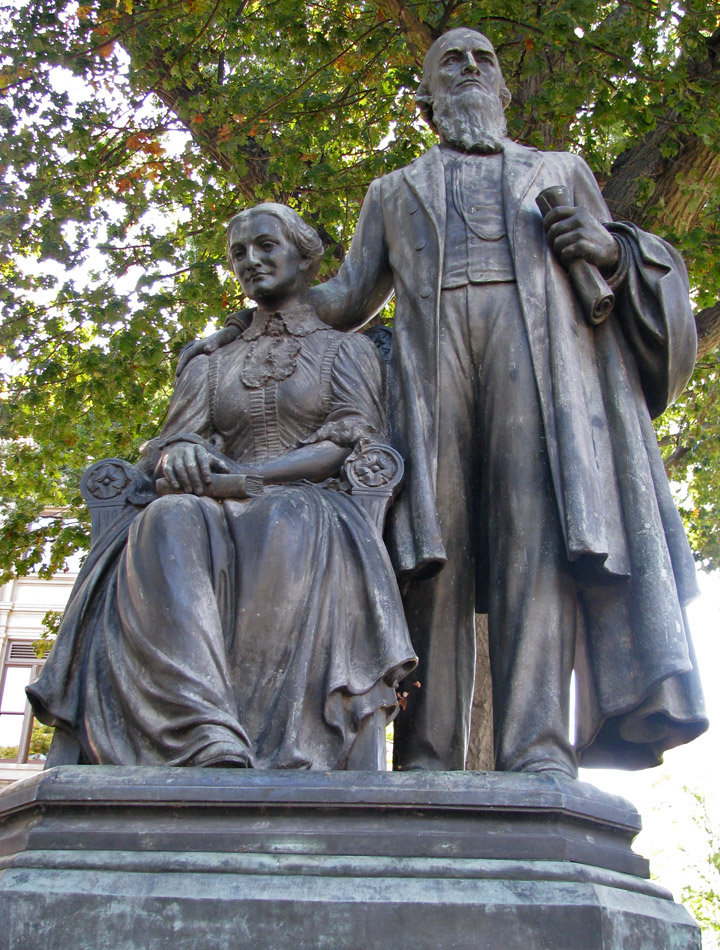
Joseph Emerson Brown
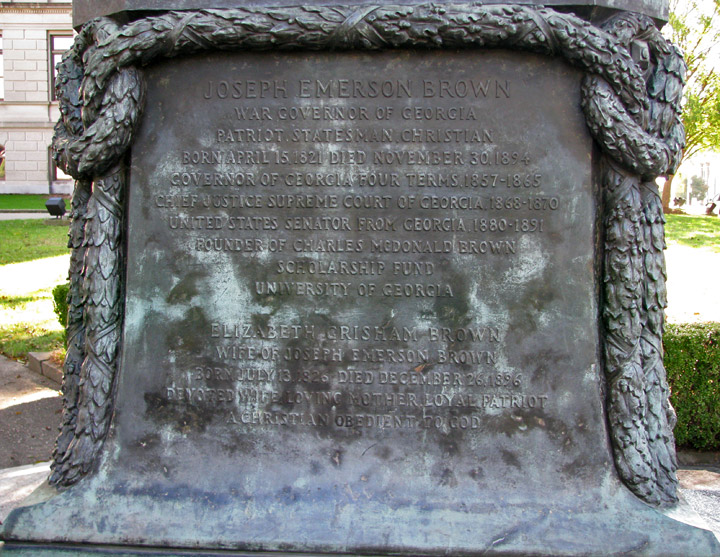
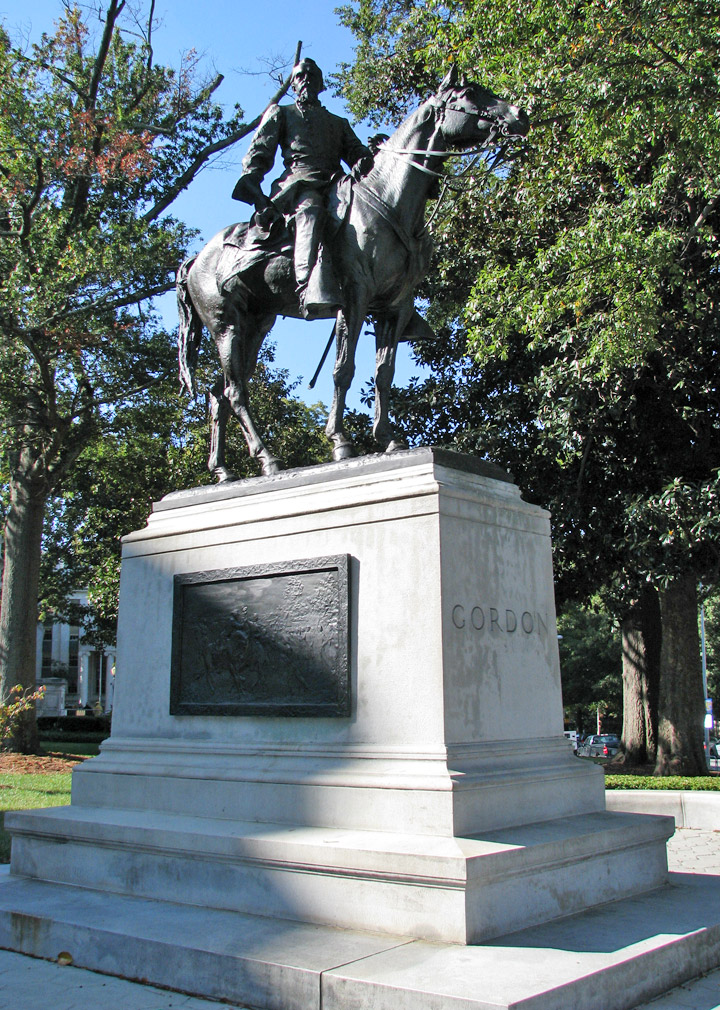
Gordon
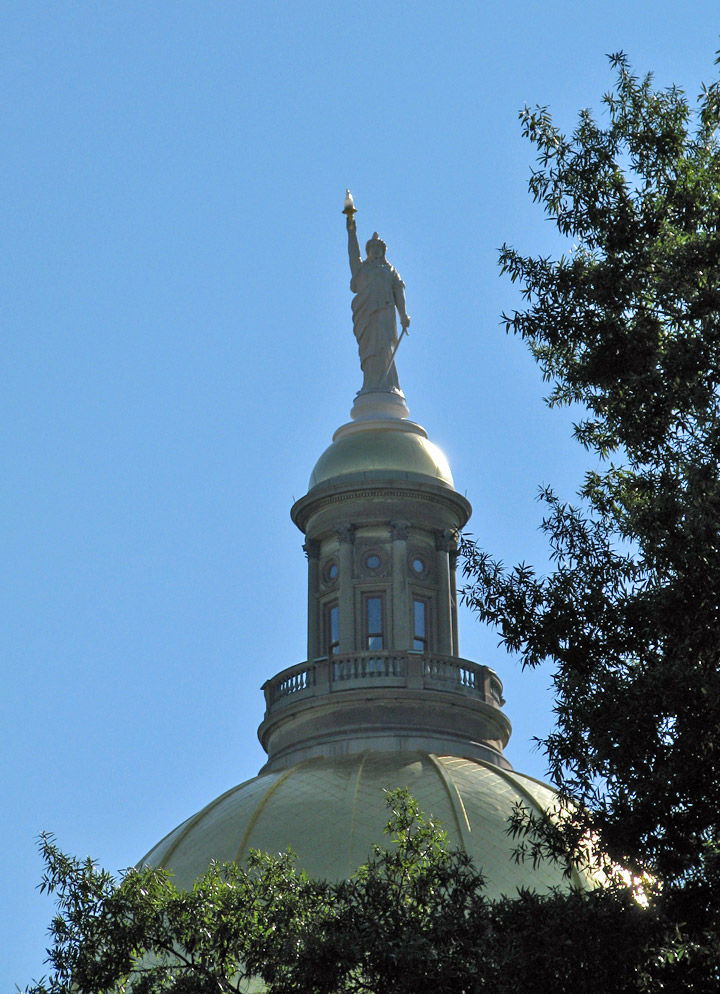
Miss Freedom
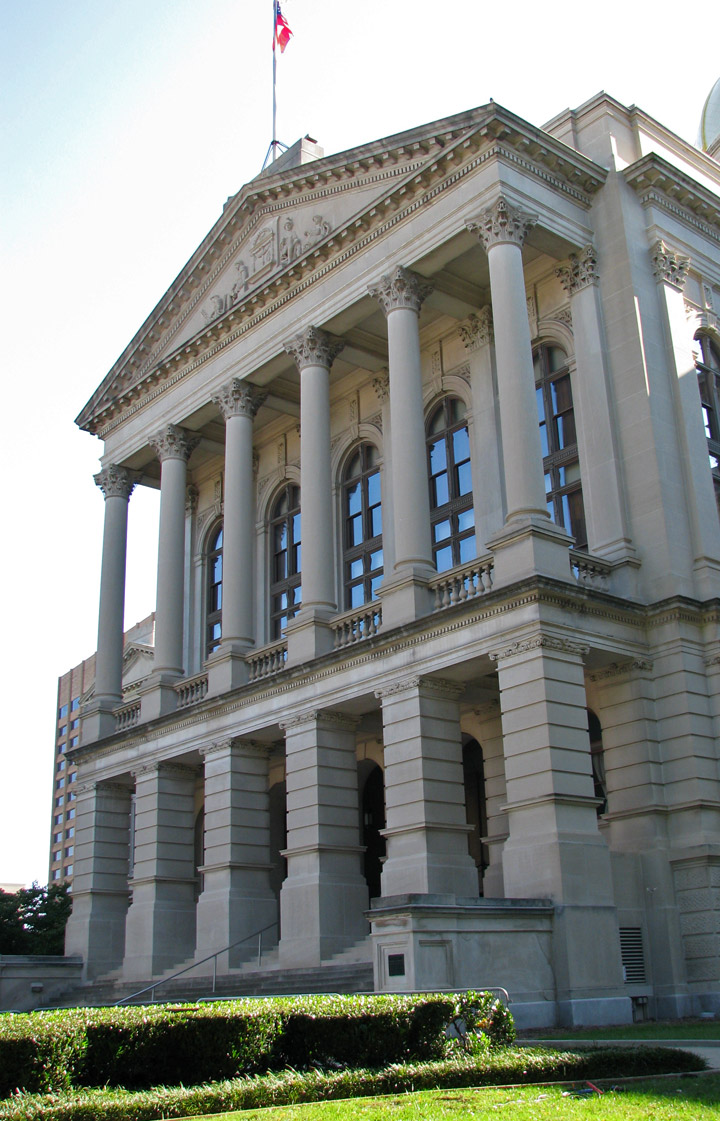
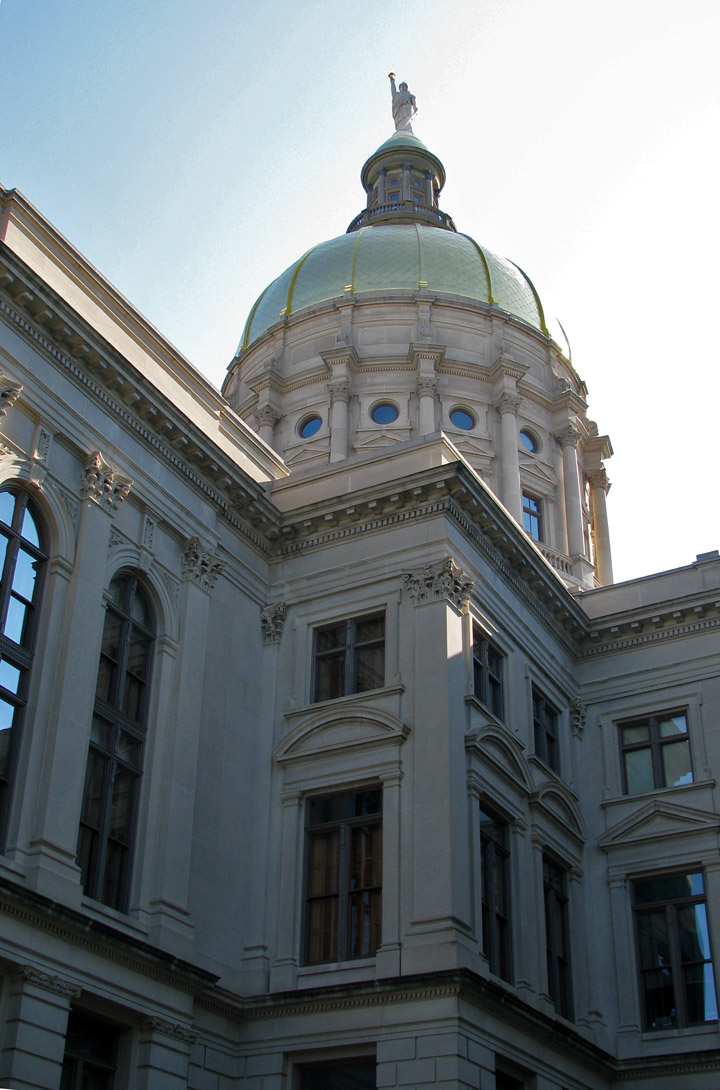

Judicial
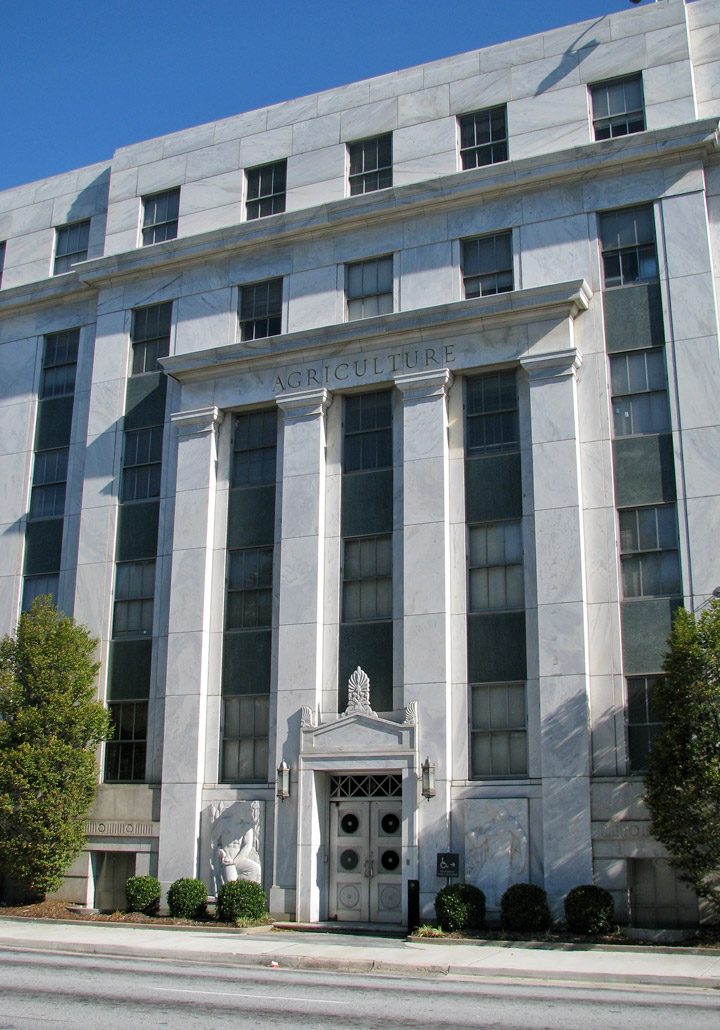
Agriculture
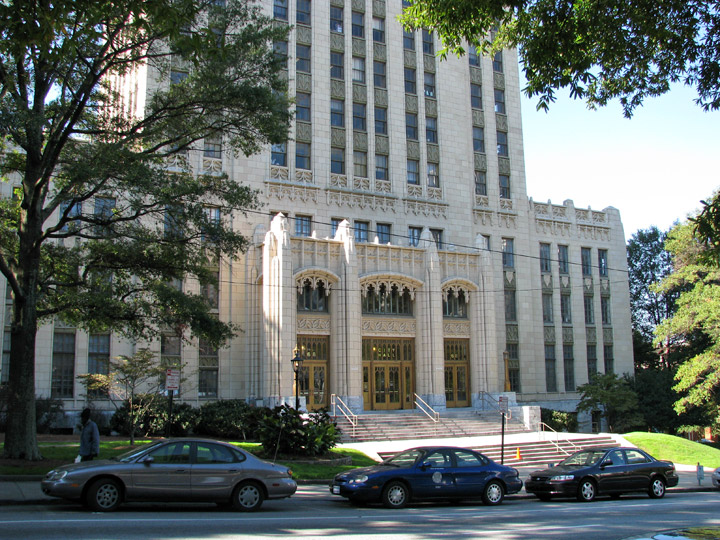
Atlanta City Hall
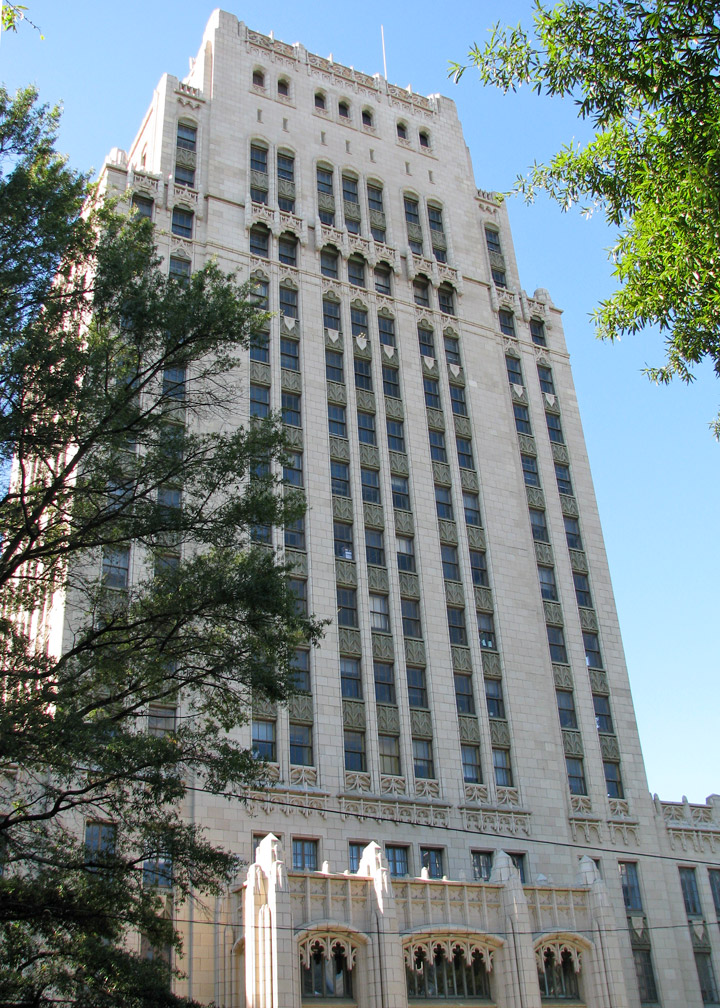
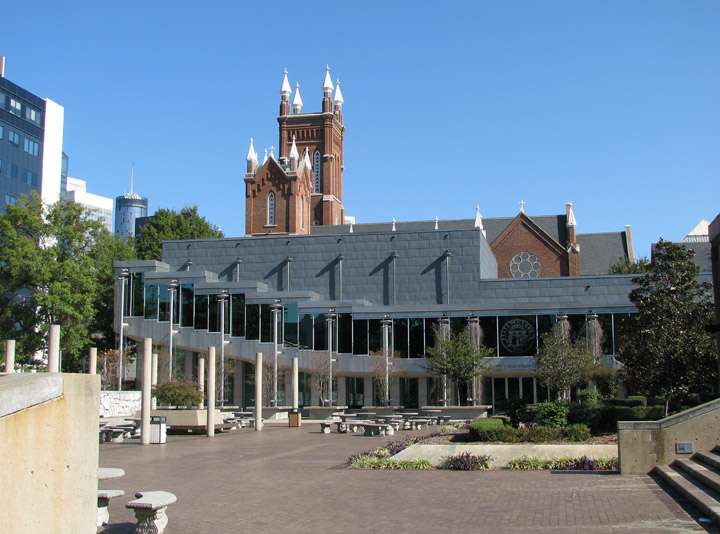
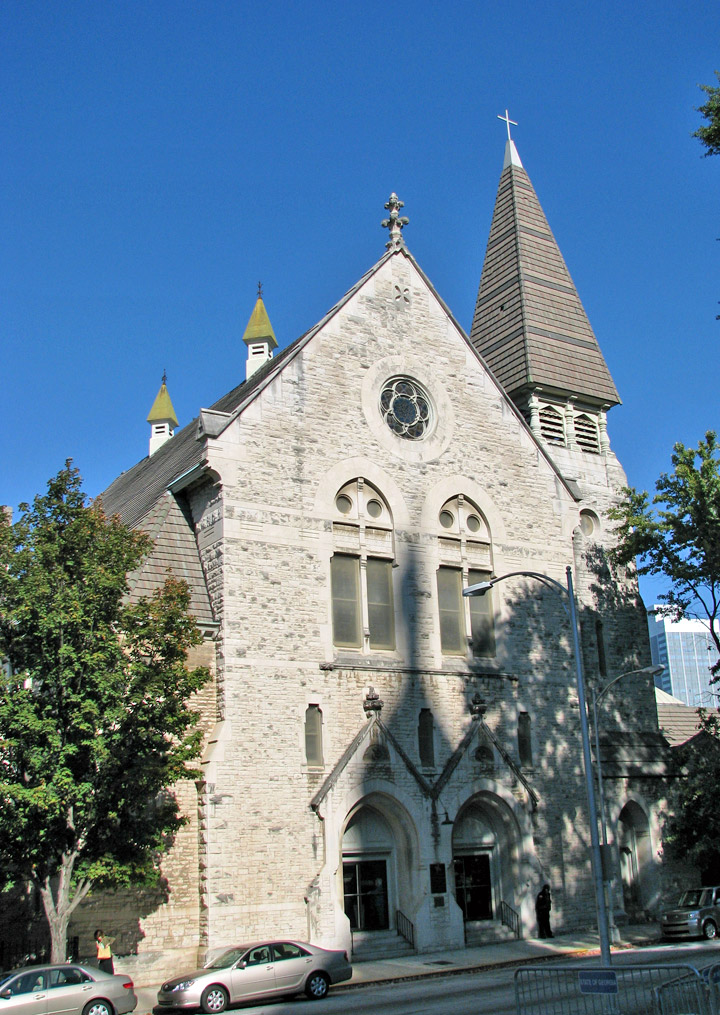
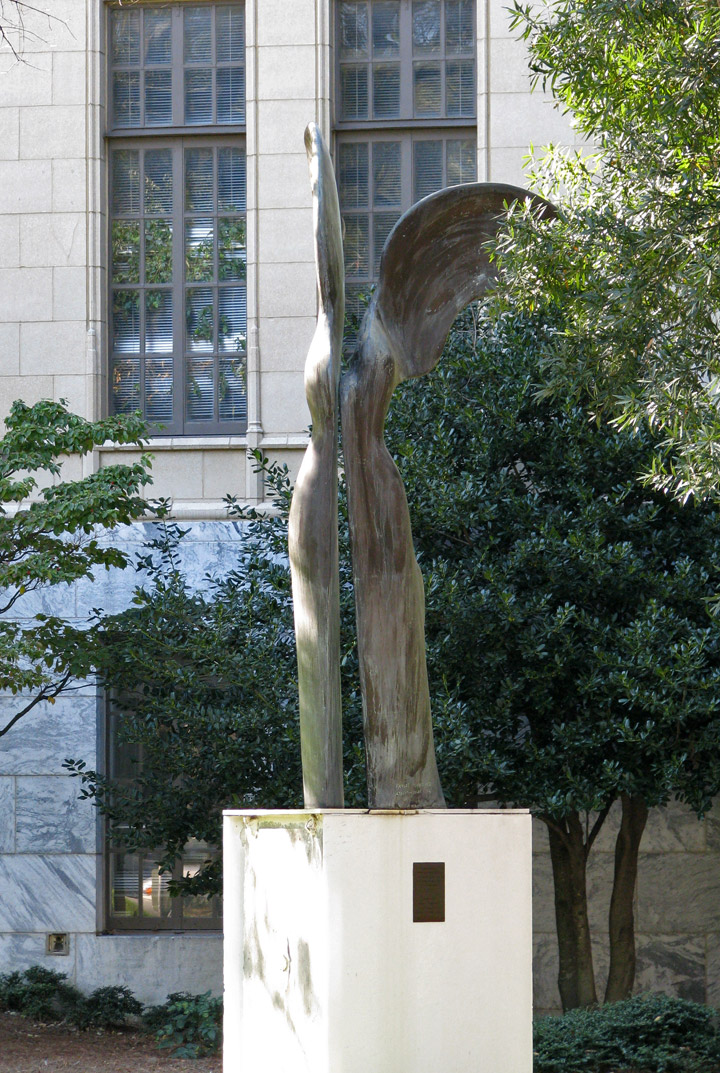
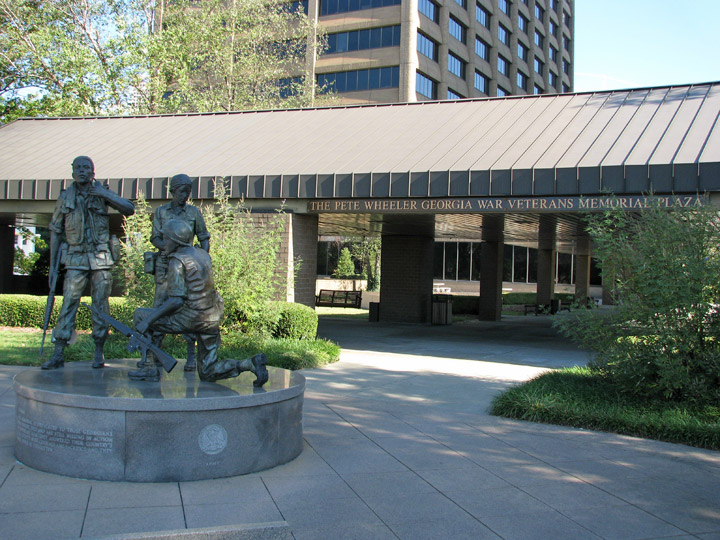
Georgia War Veterans Memorial
